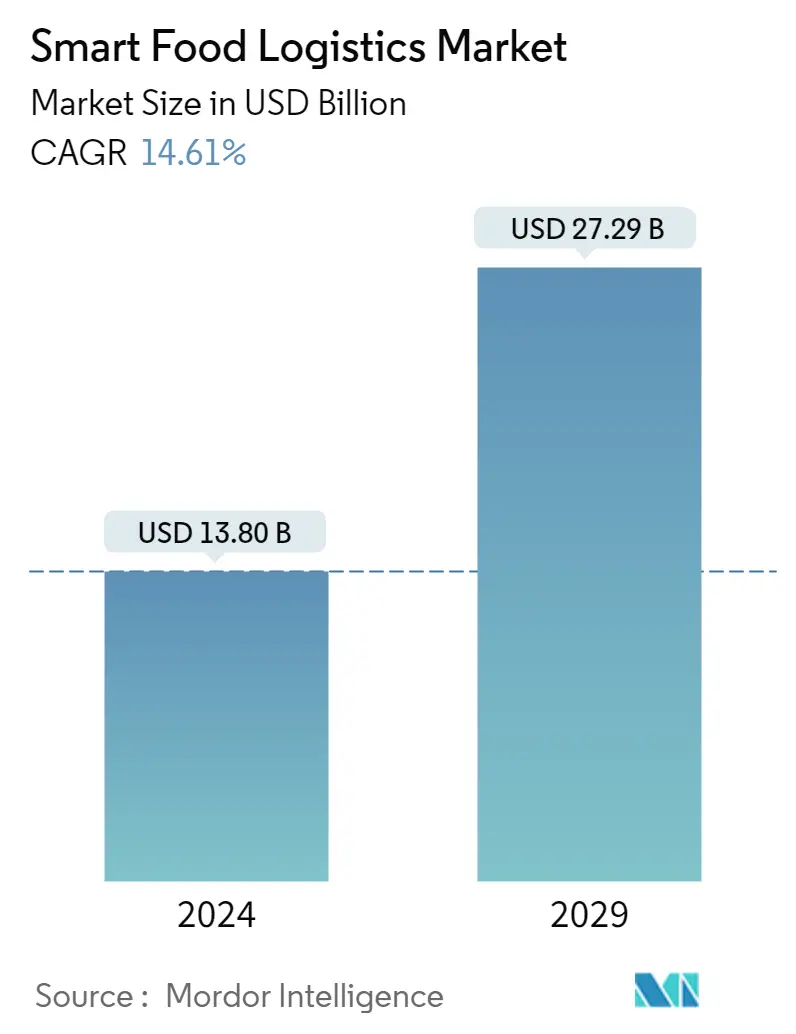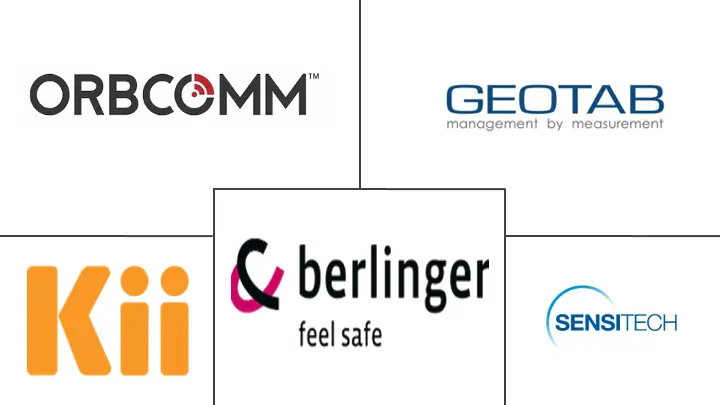Market Size of Smart Food Logistics Industry

| Study Period | 2019 - 2029 |
| Market Size (2024) | USD 13.80 Billion |
| Market Size (2029) | USD 27.29 Billion |
| CAGR (2024 - 2029) | 14.61 % |
| Fastest Growing Market | Asia-Pacific |
| Largest Market | North America |
Major Players
*Disclaimer: Major Players sorted in no particular order |
Need a report that reflects how COVID-19 has impacted this market and its growth?
Smart Food Logistics Market Analysis
The Smart Food Logistics Market size is estimated at USD 13.80 billion in 2024, and is expected to reach USD 27.29 billion by 2029, growing at a CAGR of 14.61% during the forecast period (2024-2029).
There is a rising trend of utilizing cold chain monitoring technologies by smart food logistics companies, especially to assist food makers in managing the transport, storage, and distribution of temperature-controlled products. Temperature changes caused by traffic jams, mechanical problems, and other things can ruin and make unsafe food that hasn't been preserved, which is a big reason why the market is growing so quickly.
- As the digital economy expands, IoT technology has evolved from a futuristic idea to a practical tool for logistics companies to use in their supply chains. Sensors and IoT tools are changing traditional asset tracking toward intelligent supply chains that can generate a higher ROI for logistics firms. These IoT-enabled sensors provide real-time information on asset or fleet location, fleet mobility speed, temperature conditions, and other critical data sets for the food industry.
- Also, the tight integration of warehouse, transport, and end-consumer information and transparency through the supply chain has been made possible by logistics and technology, along with cloud-based collaborative solutions that extend through the entire supply chain. This, in turn, has been recognized as a key driver of the growth of the market under study. Also, different food laws and regulations in different areas, like the Food and Drug Safety Act, put a lot of pressure on supply chains to record more information and be more open, which is a big reason for the market's overall growth rate.
- Moreover, the market is witnessing various strategic mergers, acquisitions, and investments by key players as part of its strategy to improve business and their presence to reach customers and meet their requirements for various applications. For example, on August 20, 2022, the Regional Centre of Excellence against Hunger and Malnutrition (CERFAM) and HELP Logistics signed a Memorandum of Understanding. The main goal was to set up a new platform for collaboration in different areas of technical, scientific, and educational research. The activities of this platform would be aimed at strengthening agri-food value chains and the overall resilience of communities in Africa to socio-economic shocks.
- But different levels of complexity in the overall installation processes could slow the market's growth over the next few years.
- The COVID-19 pandemic significantly interrupted practically all end-user industries worldwide, disrupting company supply chain management owing to remote working circumstances or total lockdown, resulting in the halt of operations. In order to survive the pandemic and keep their operations running smoothly, the disruption caused companies to use technology and digitalization more. As a result, the market is expected to have many growth opportunities over the next few years.
